10 popular Japanese classics under $25K
Among the various corners of the collector car market, few have seen such widespread ascent in the last decade as vehicles from Japan. Demographically, this makes sense—just as muscle cars transitioned from mere “used” cars to collector status as the generation that grew up with them hit their peak earning years, so too have cars from the ’80s, ’90s, and early aughts. What’s more, though there are plenty of standout moonshot examples—looking at you, Skyline GT-R and Mk IV Supra—this latest round of emerging classics also offers more accessible ways to enjoy cars from a bygone era.
We dug into our Hagerty Price Guide data to see which Japanese collectibles can be had in #2 (excellent) condition for under $25K. This fetches a needs-almost-nothing example that, while not quite concours level, is nice enough to proudly display at shows and events, or just use and enjoy as a pristine example. Driver-quality cars can typically be had for thousands less. We wanted to get a feel for what’s popular in addition to where the values stack up, so we layered insurance policy data on top of the $25K threshold to see which models in this group were most abundant among Hagerty customers. Here are the top ten.
1990–2005 Mazda Miata

Perhaps it should come as no surprise that Mazda’s cheerful little convertible occupies the top spot of this list. Technically, it’s the top two spots, with the first-gen NA model taking top honors and the ’99–’05 NB nabbing second place. With three-quarters of a million of them built between these two generations, Miatas were $3000 cars seemingly forever. Plenty of them still exist, but racing and decades of being known as a cheap-thrills sports car means that finding excellent-condition cars has become a bit more challenging.
Whether you’ve gotta have pop-up lights or prefer the updated look and feel of the second-gen cars, you can find one for less than $20K. Currently, #2 condition Miatas in these generations range from $19K for a ’97 model (the final year of the NA) to $16,900 for an ’05, the last year of the NB. Deals are out there, and these reliable cars still have decent parts availability, so the diminutive Miata is likely to loom large in the collector world for years to come.
1984–1996 Nissan 300ZX
Beneath the Miatas on this list, two generations of 300ZX sit adjacent to one another. The 1990–’96 Z32 base (non-turbo) Z-car slides in ahead of its more angular ’84–’89 Z31 older sibling. Though the Z32 introduced a number of changes that made the car more dynamically appealing, 30–40 years on, performance is less of a consideration for these cars. The bigger question is stylistic: whether to go for the pseudo-digital, boxy-look ’80s, or the more sculpted ’90s-Japanese-sports-car-boom visual.
Z32 base cars nudge our $25K limit with a #2 value of $24,500 in later years, with values slipping a bit for 2+2s and older cars. Turbocharged examples of Z31-generation cars hit 25 grand right on the nose, but a #2 condition 1987 base Z comes in at $11,400, so there is a wide value spread of quality Z-cars from this era.
1984–1989 Toyota Pickup

Turns out Marty McFly isn’t the only one who likes the Toyota Pickup. That the durable, runs-forever Pickup (Toyota really got creative with the naming of this one) finds itself third on this list behind two venerable sports cars speaks to just how much people dig this truck. Based in no small part on surging interest interest in the Pickup, we named it to the 2023 Hagerty Bull Market List.
Despite the buzz, there’s some solid values out there. #2 condition values range from $25,000 for an ’85 SR5 or half-ton 4×4 down to $13,200 for a 1985 Deluxe trim with the diesel engine.
1990–1995 Toyota MR2
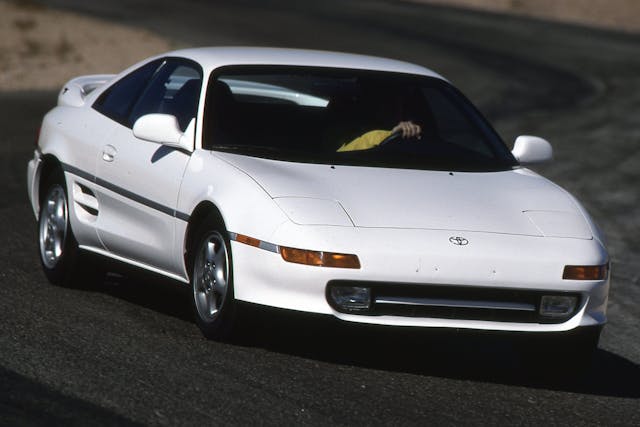
Baby Ferrari looks and mid-engine character set Toyota’s Mk II MR2 apart from the others in this list. Though the 200-horse turbocharged 2.0-liter 3S-GTE engine was more sporting, the base car’s 130-horse mill only had 2300 lbs to push around—similar to a contemporary Miata in terms power to weight ratio. The “Mister Two” garnered a less benign reputation than the Mazda as a result of stories of exuberant owners finding themselves facing the wrong way after lift-off oversteer moments, however. To quell these concerns, Toyota induced a number of suspension tweaks over the car’s life.
That doesn’t appear to have dampened enthusiasm for the MR2 in the collector market. Turbo models have crept above $40K, but the base car hovers at $24,400 for younger cars and $19,300 for early models.
2003–2008 Nissan 350Z
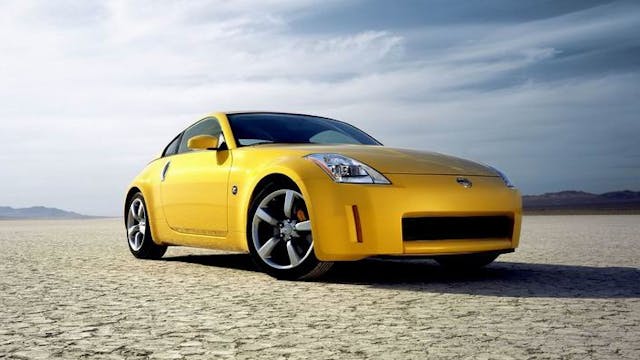
Three generations of Z-car on this list suggests Nissan was doing something right back in the day. After a brief hiatus, the Z returned, eschewing the previous generation’s tech-heavy ’90s approach for retro-ish styling and the now-revered (but aurally divisive) naturally aspirated VQ35DE 3.5-liter engine. Its debut was welcomed with enthusiastic reviews, and it quickly become a regular in the tuner scene and at track days.
Like the Miata, the 350Z’s sporting pretenses mean that many of them have met a noble end fulfilling their intended purpose, and still more have been cut up or modified in that vein. Clean ones are out there, but they do take some sleuthing. Right now, #2 condition values range between $23K and $24,900 depending on year and trim. The 350Z was also part of Hagerty’s 2023 Bull Market vintage.
1985–1995 Suzuki Samurai
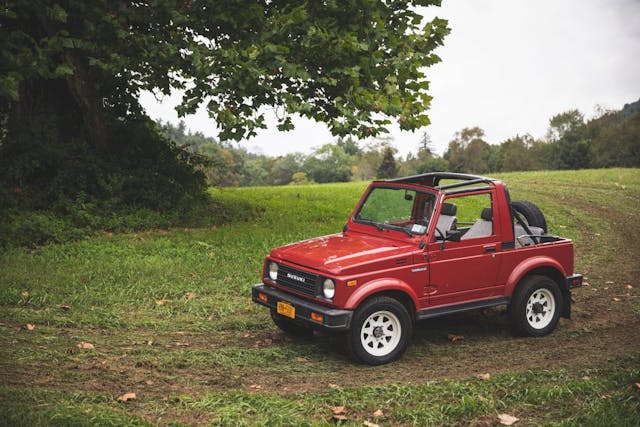
The second of two trucks in this group, the Suzuki Samurai is also a Hagerty Bull Market List vet (from 2022). Samurais made a big splash in the U.S. market when they debuted for the 1986 model year, and they remain popular among off-roaders and fun-seekers today. Parts and modifications abound for this ultra-basic collectible, ensuring enthusiasts can keep theirs up to snuff or build their Samurai to conquer their local trails.
There’s a big spread in values for the Samurai based on years and trim. $24,500 snags a ’95 JL, while a similar-condition ’91 JS can be had for a mere $13,700.
1991–1999 Mitsubishi 3000 GT
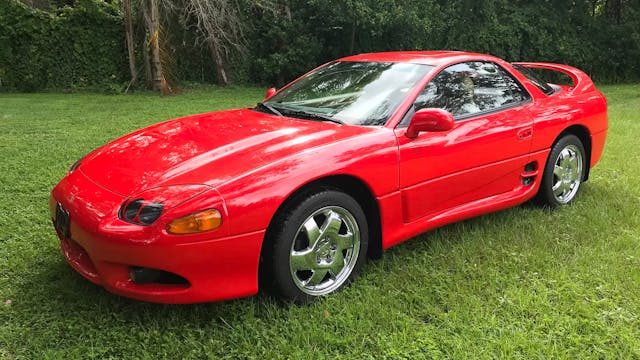
Perhaps as well as any, Mitsubishi’s 3000 GT VR4 embodied the tech-driven battle for Japanese sports car supremacy in the ’90s. Active aero, all-wheel drive, all-wheel steering, tunable exhaust, twin turbos, and a host of other features made for a quick, if chunky, entry into the segment. Buyers who wanted the show and some of the tech without the associated cost could opt for the front-wheel drive, non-turbo 222-horse 3000 GT SL. 1994 brought with it a facelift, and this second generation also saw some of the options begin to taper in an effort to keep prices in check. Ultimately, increasing prices drove sales to a trickle, and the car’s final year stateside was 1999.
Values for the SL vary between $19K for a ’99 down to $13,400 for a ’91 model. Base cars still come with the 222-horse engine, but forego most of the techno-gadgetry that help give the car its personality. As such, they range from $16K for a facelifted car to $11K for an early model.
1968–1973 Datsun 510
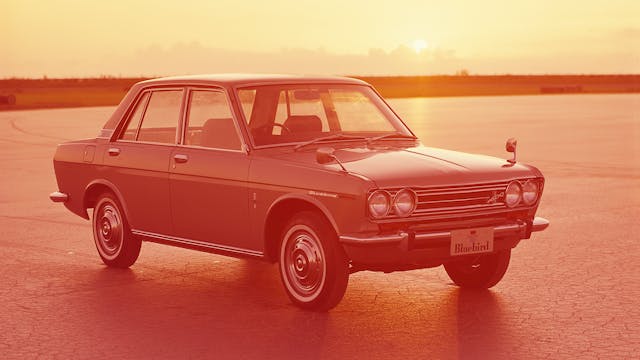
Datsun’s 510 stands as one of the first cars to truly convert Americans into loyal customers of a Japanese brand. As we highlighted in a recent Market Spotlight, the small sedan dominated its class in racing throughout the ’70s and introduced a fun, affordable driving experience to thousands.
They’re still reasonably affordable, too, despite a recent uptick in values. $20,500 will fetch a #2 condition sedan. Expect to pay more for coupes, as they’re more rare.
1985–1991 Honda CRX
If the 510 was the car that democratized driving fun among the first big wave of Japanese offerings on U.S. shores, Honda’s CRX brought a similar take to the economy segment in the ’80s. Honda R&D Managing Director Hiroshi Kizawa’s brief for the car came down to two words: “Economy Fast,” and while no one would consider a stock CRX fast these days, the car did wonders to inject the notion of driving pleasure into Honda’s previously plain but reliable and economical identity.
These days, #2 values for a CRX Si—assuming you can find one in that condition—hover around $23,500. That may sound like a lot of money for not a lot of car, but a CRX never fails to bring a smile when the roads begin to twist. The CRX Si landed on Hagerty’s Bull Market list in 2020.
2002–2007 Subaru WRX wagon

The last car on our list sits directly astride our $25K threshold. The four-door Subaru WRX that hit our shores in 2002 is now worth a cool $25,200 in #2 condition. The wagon of the same era squeaks under, however, at $22,400.
What’s not to like about a discount for more space? Though it’s every bit as capable, it’s not the look popularized by the high-flying Subarus competing in the World Rally Championship at the time. The last couple of refreshes of the WRX have brought hand-wringing from the Subaru faithful, who think the company has slowly gotten away from the original identity and feel of the car. Whether that’s true or not, combine it with attrition over the years, and the old ones that are left have become revered, useful collectibles.
***
Check out the Hagerty Media homepage so you don’t miss a single story, or better yet, bookmark it. To get our best stories delivered right to your inbox, subscribe to our newsletters.
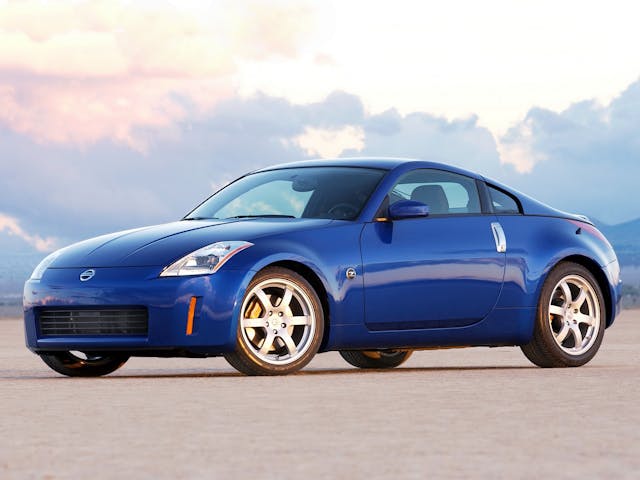

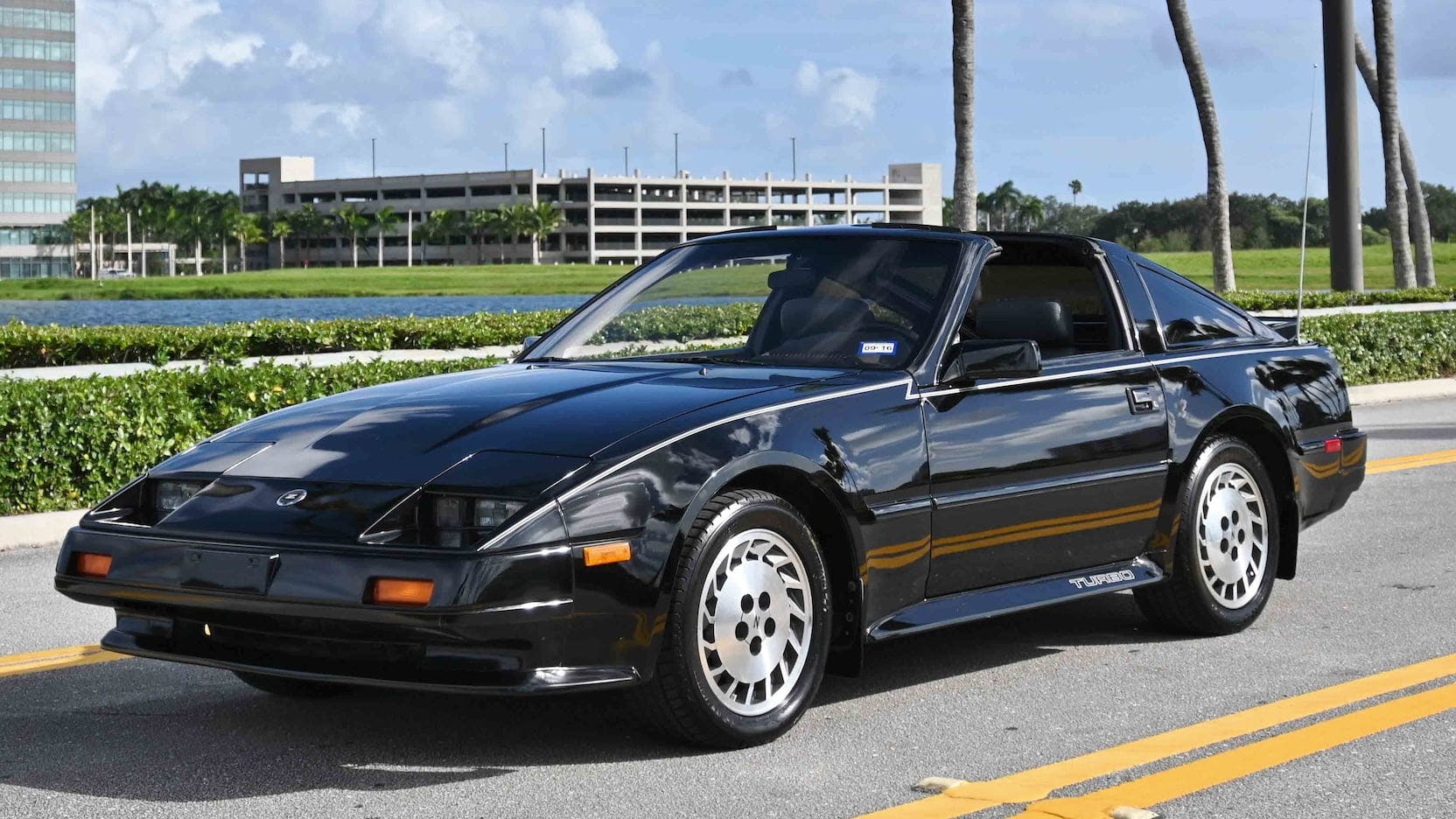


There is absolutely no such thing as a Japanese classic car.
What happened to the Lexus SC300/SC400 sold from 92-2000? These were a marvel of engineering and beautiful to look at. The 400 sported the “million mile” V8, while many will know that the 300 was essentially a Supra under the skin. Leather, luxury, reliability……all still well under the 25k. I’m not sure what makes a car a “classic”, but if you’re talking remarkable and collectible Japanese coupes, the SC’s should be featured on any list.
Had two Miata’s a 2000 and 2001 both fun, dependable, and cheap to drive. Although, I happen to find the original window sticker in the owners manual , I couldn’t believe it had an $25,000 maroon. I thought they were around $12000-15000 new. Not sure if I would’ve paid that much when new. Most of the first generation I see have been beaten and really abused. The second generation seems to have taken better care, but then if they cost close to $25000 many owners weren’t in a hurry to take them to the race tracks.
Had a few Samurai’s Loved them, again, fun, cheap, dependable, and most of all simple.
Moroon should have been msrp. Computer auto corrects
I’m surprised any generation of the Toyota Celica doesn’t make it to these kinds of lists. Highly optioned models like the GT-S or Turbo All-Trac are prime examples. The fact that the Supra is well above the 25k threshold, anything in the 4th to 7th generation Celica would make great collectibles. Likewise the Acura RSX. These are also starting to go up in value for good, clean examples.
I think 1st generation Celicas were great. Unfortunately, I think rust did a lot of them in as you don’t see any around and the two I have seen needed a lot of rust repairs.
Why no love for a number 2 NX2000 5 speed ,targa top under $10 grand .As much fun as a Alfa
Might as well include the Mazda MX-3 Precidia. Very similar in design, but with a sweet 1.8L V6.
Honorable mention: 1979-1981 Plymouth Sapporo, built by Mitsubishi. Motor Trend called it the “High Plains Drifter”. 2.6 liter 4-cylinder with a 5-speed. Beautiful stying. You almost never see them at car shows probably because they all rusted out long ago.
What about the 1991 Nissan Figaro? Oh, wait…you said “POPULAR Japanese classics”.
I had a 91 MR2 Turbo and it was a great car. It was red and looked like a baby Ferrari. Rock solid build with no squeaks or rattles. Yes, Never lift off the throttle in the middle of a curve going fast or you will find the rear of the car facing front!
Does anyone remember the Mitsubishi Mirage Turbo/Dodge Colt Turbos? I had an 87 Mirage Turbo and then an 89 Dodge Colt Turbo. Both were great, with the 89 being a really great one! I looked for an 89 about five years ago. They are all gone now…
Wow, a couple to chose from here…but if I had to pick one it would have to the MR2. Particularly the later versions with more organic styling. Nicely balanced, a bit under powered, but the aftermarket took care of that. Everything the Fiero was not, and at a reasonable cost.
In 1977 I bought a 1970 510 2 door. Full 2″ lowered Mulholland suspension, Interpart fender flares, Stebro exhaust. That 510 beat the hell out of my BMW 2002 I had a few years later. I think part of my love/hate relationship with the 2002 was that I sold a 1962 Austin-Healey 3000 with the factory tri-carb set up on it to buy the Bimmer. It was the BIGGEST POS I’ve owned to this day. And that includes my Jag XJ-6 Sereis III and the Range Rover Classic I have in my driveway now. Not to mention various English, Italian and Swedish marques along the way. Wish I’d never sold my 510….
My first new car was a 1985 Honda CRX and I could not have enjoyed it more. I was a year out of college and had my first real job. The color options were red, white, and blue and I chose blue. The only options I chose were the automatic and a mid-range stereo system. Having only driven Studebakers and a DeSoto until then, I didn’t need or want air conditioning. I sold it after ten years, when I decided to upgrade to a car with more cylinders and more seats.